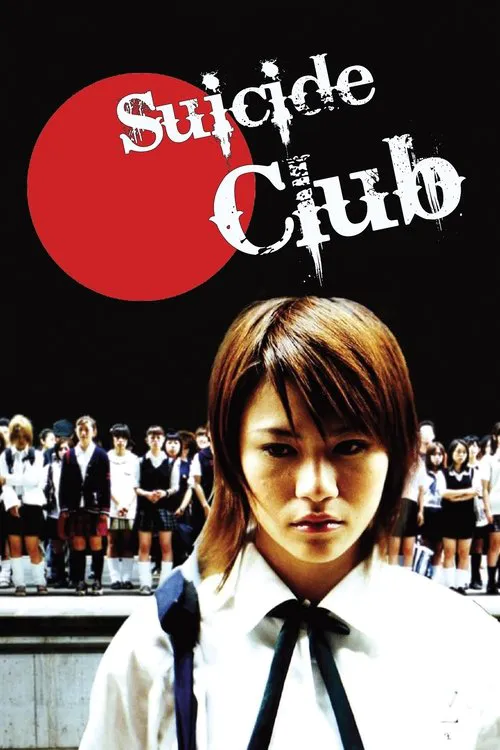Suicide Club

Plot
In Tokyo's vibrant and often dark underbelly, a series of inexplicable events sets off a chain reaction that will shake the very foundations of the city's psyche. The Suicide Club, directed by Sion Sono, is a gripping and unsettling film that delves into the complexities of adolescent despair, social pressures, and the blurred lines between reality and fantasy. The film begins with what initially appears to be a random act of violence: 54 high school girls, all wearing identical black dresses, throw themselves in front of a speeding subway train. The scene is graphic and disturbing, setting the tone for the rest of the movie. As the news spreads, a sense of nationwide shock and outrage envelops the city. The authorities are baffled by the event, and soon, the police are faced with a series of similar mass suicides across the country. Enter our protagonist, Detective Kuroda (played by Riki Takeshita), a stoic and introspective investigator tasked with unraveling the mystery behind these tragic events. At first, he's convinced that the girls' actions are the result of some sort of contagious mental illness, but as more bodies surface, he begins to suspect that something far more sinister is afoot. As Kuroda delves deeper into the case, he discovers a web of social and psychological factors that contributed to these girls' collective descent into despair. He talks to their families, teachers, and classmates, exposing a seemingly idyllic but deeply troubled world of Japanese high school life. From relentless academic expectations to social pressures to conform, these factors converge to create an environment where the girls feel trapped and powerless. However, with each new interview, Kuroda becomes increasingly obsessed with finding a singular explanation, a smoking gun that will unravel the mystery behind the suicides. His fixation leads him to question the girls' motivations, as well as his own perceptions. As the investigation unfolds, the film raises fundamental questions about the human condition, the search for meaning, and the darkness that lies beneath the surface of seemingly ordinary lives. One of the most striking aspects of The Suicide Club is its nuanced and complex portrayal of adolescent experience. The film eschews stereotypes and simplifications, instead presenting a multidimensional exploration of the teenagers' inner lives. These girls are not mere pawns in a dark game; they're flesh-and-blood individuals, struggling with their own identity, relationships, and sense of purpose. Through a series of bold and unflinching scenes, Sono masterfully captures the intensity and turmoil of these girls' inner struggles. The film employs dreamlike sequences and surreal visions, where the lines between reality and fantasy blur, reflecting the girls' own disorienting experiences. It's a powerful portrayal that highlights the often-deadly consequences of societal expectations and the cruel fate that awaits those who dare to challenge them. In The Suicide Club, the audience is treated to a series of unsettling and thought-provoking scenes that gradually build towards a shocking conclusion. With each new revelation, the mystery deepens, and the viewer is forced to confront the darkest aspects of human nature. This haunting and unflinching film leaves the audience grappling with questions that linger long after the credits roll. Ultimately, The Suicide Club is a film about the search for answers in a seemingly meaningless world. It asks us to confront the voids within ourselves, to peer into the abyss of human despair, and to confront the reality of our own mortality. If we look closely enough, we'll find that the lines between reality and fantasy are far more permeable than we've ever imagined. And it's here, in this dark and uncharted territory, that we find the true horror of The Suicide Club.
Reviews
Recommendations




